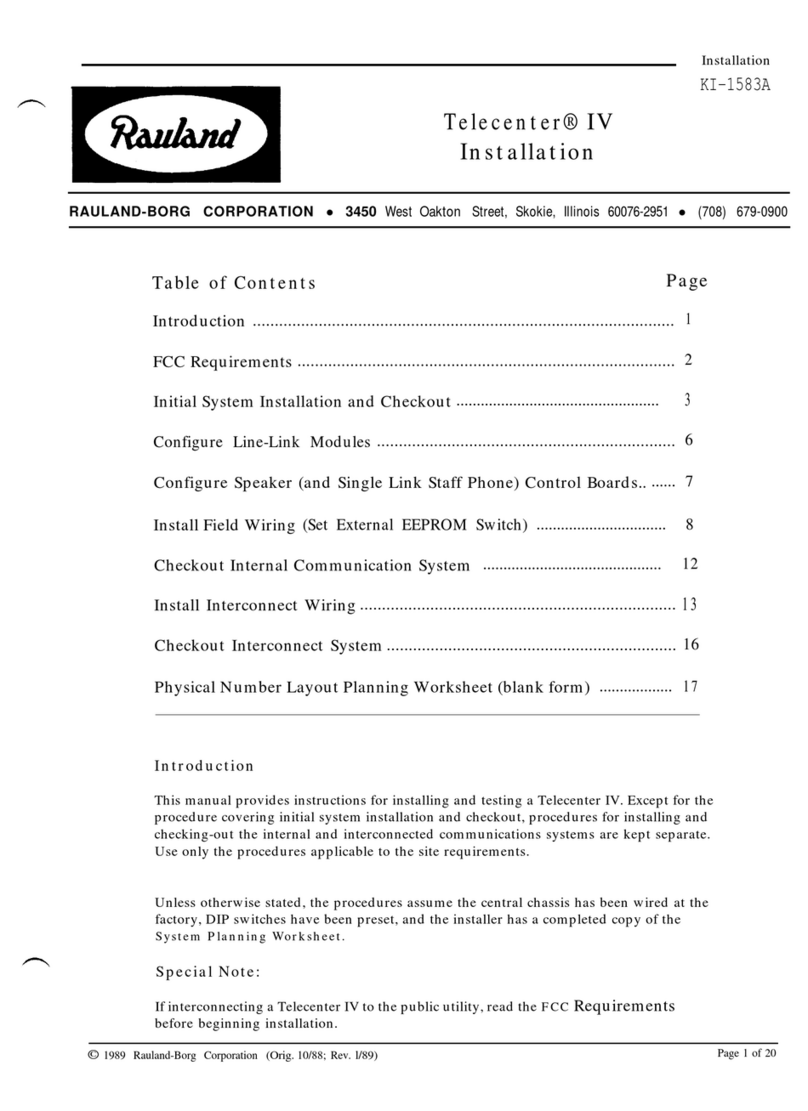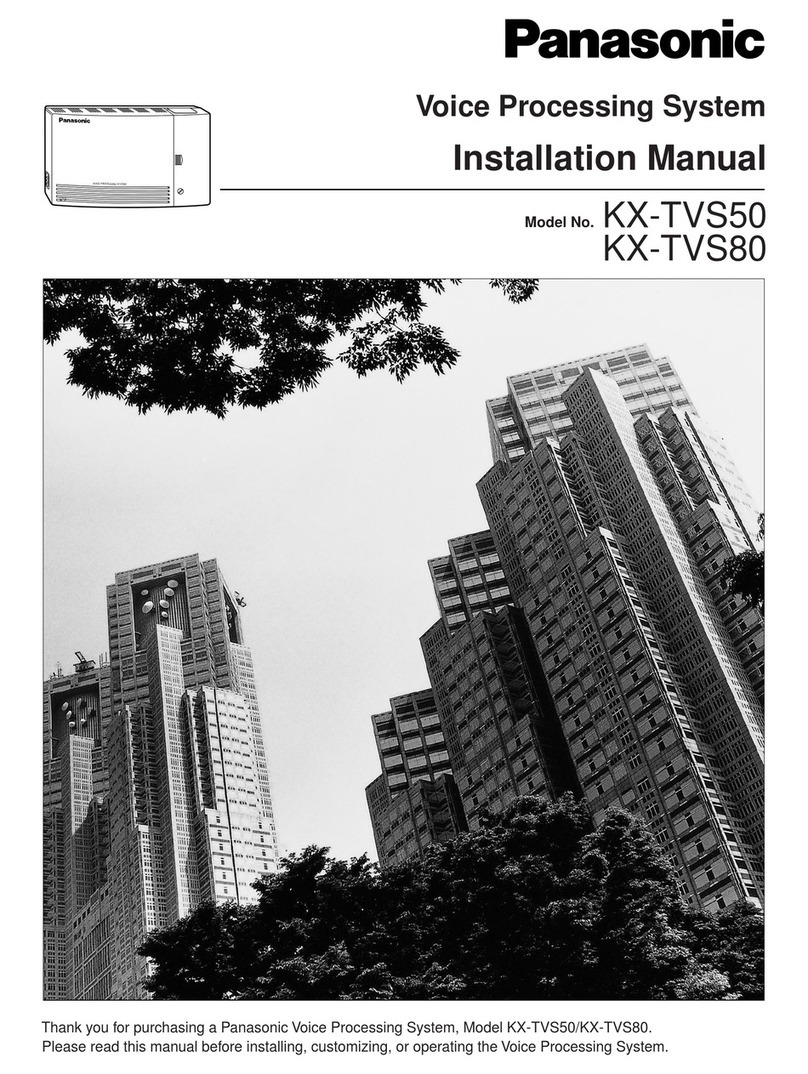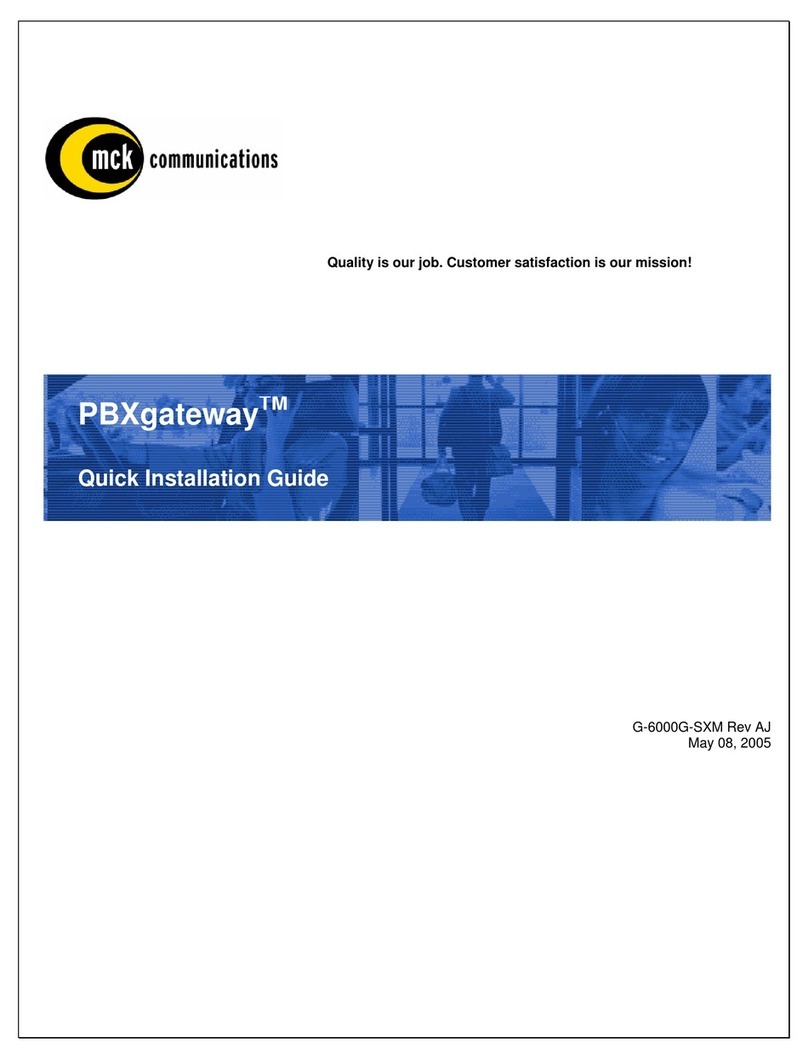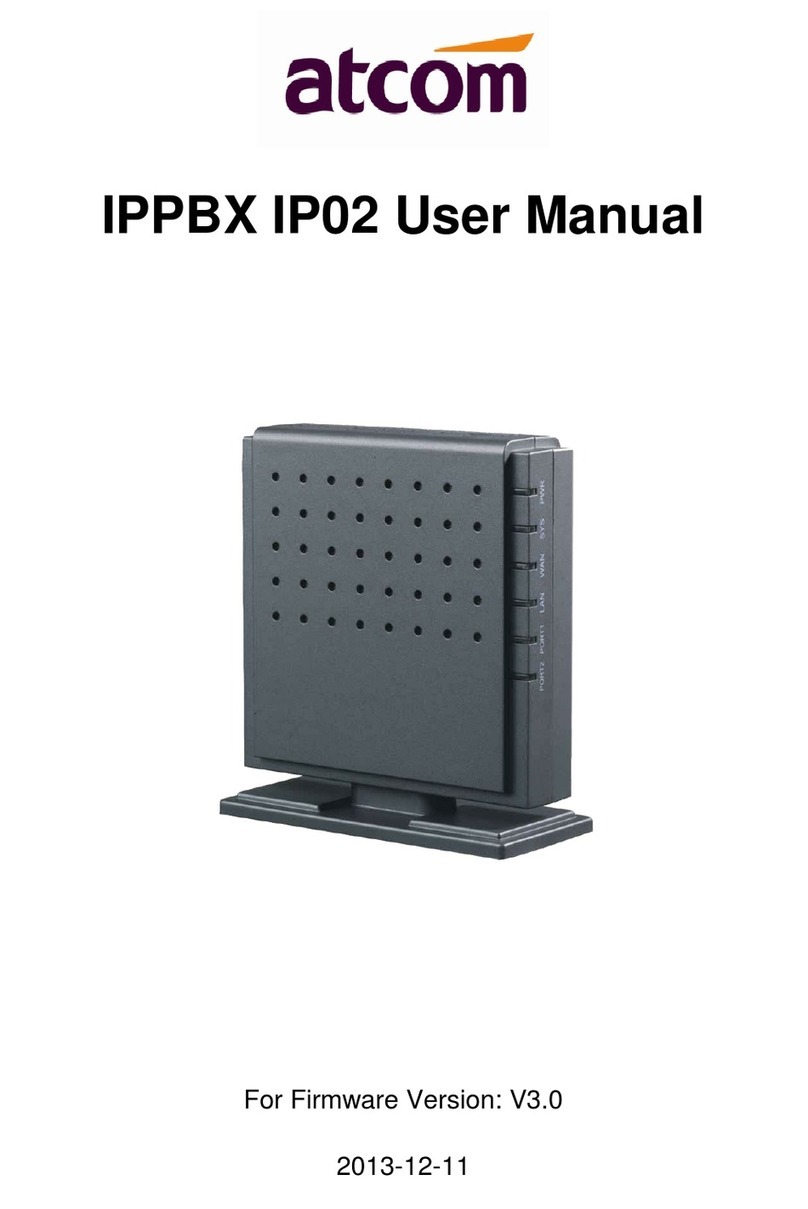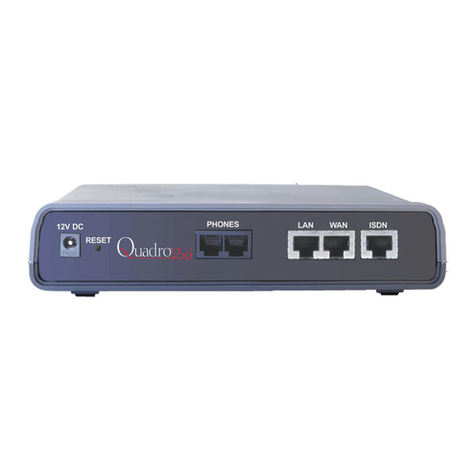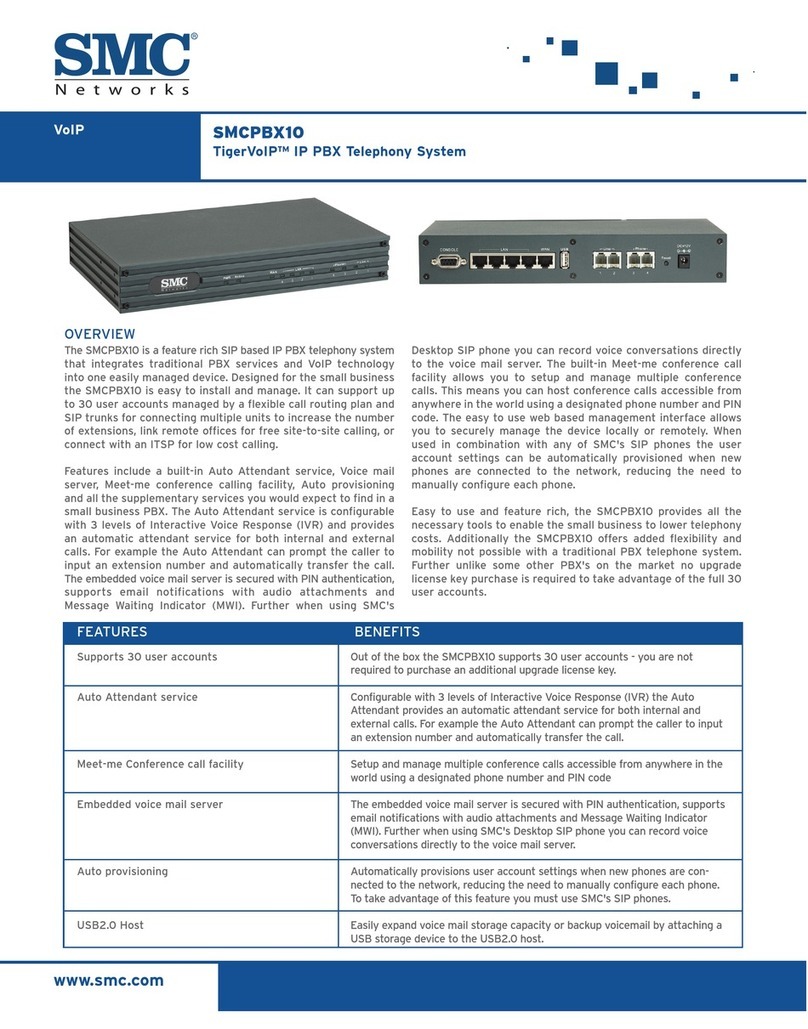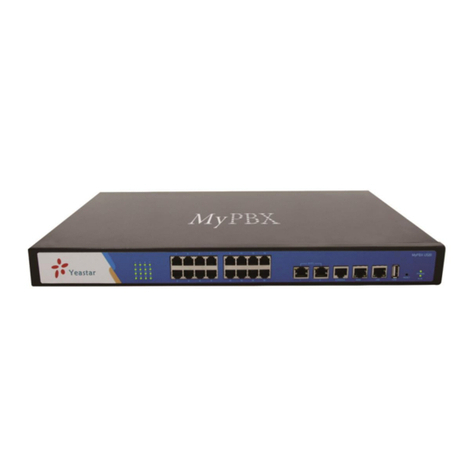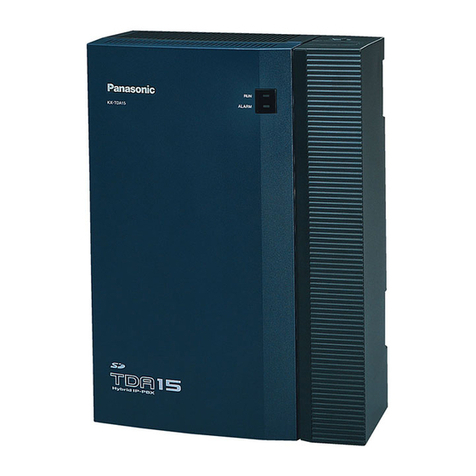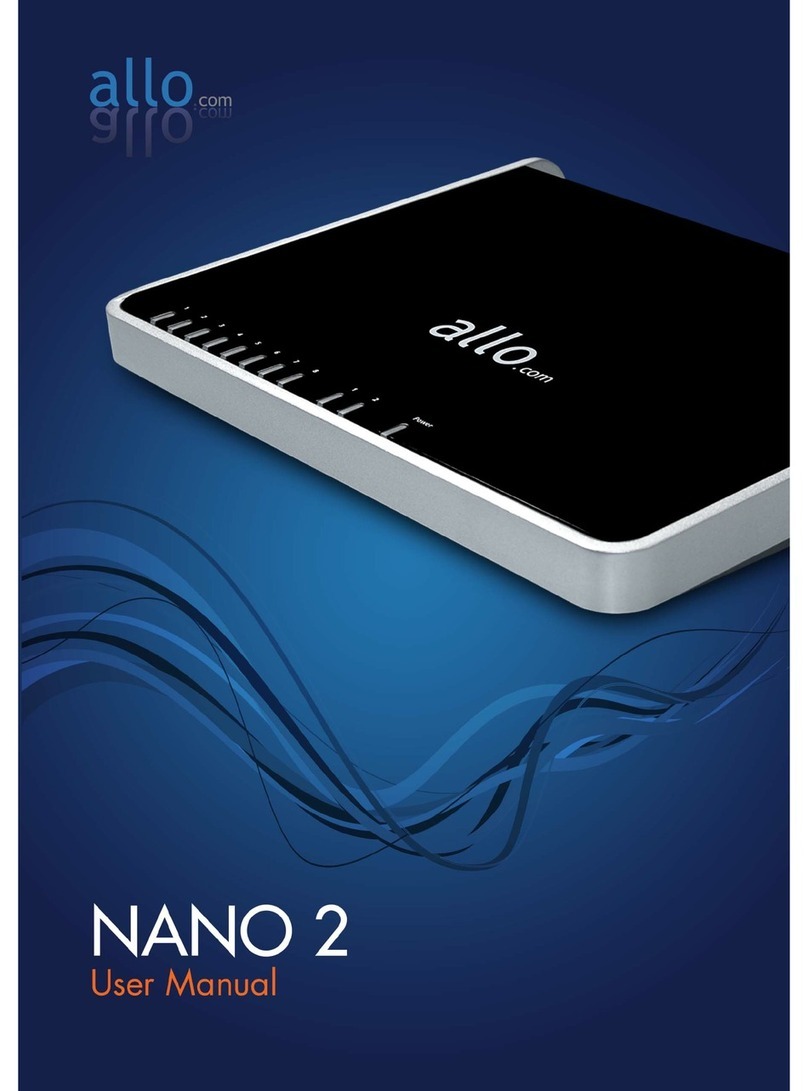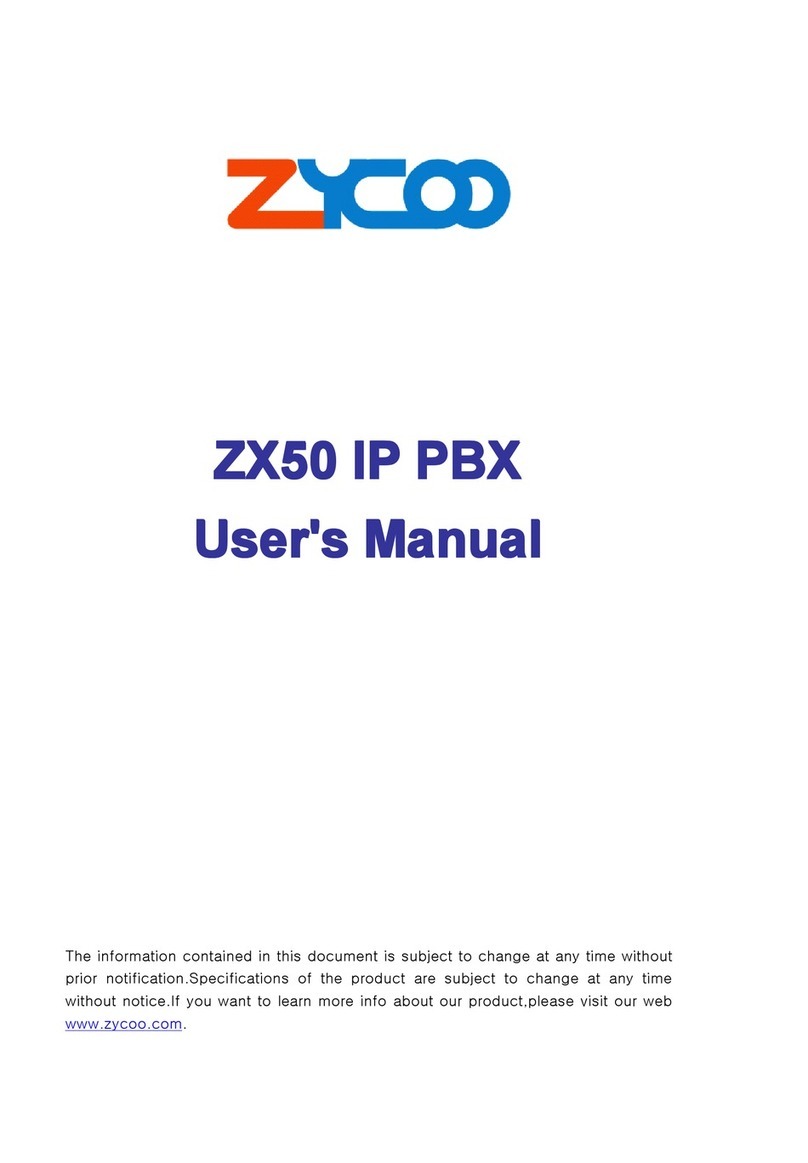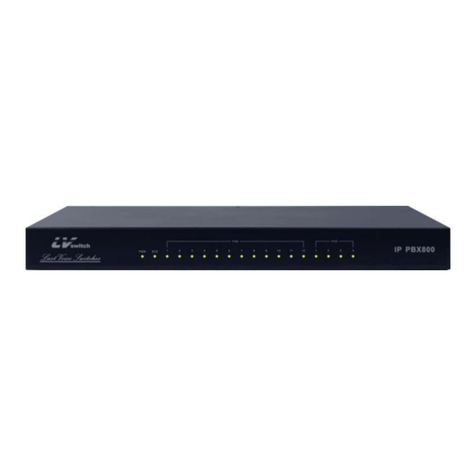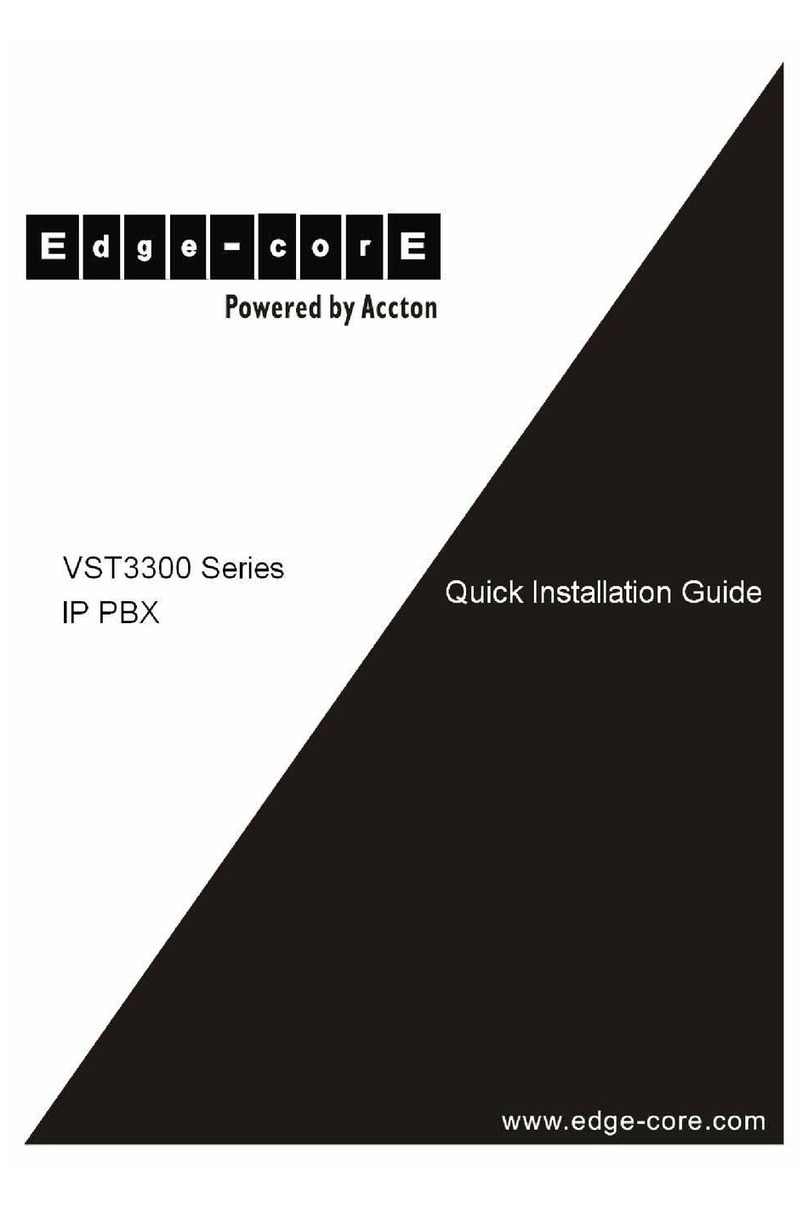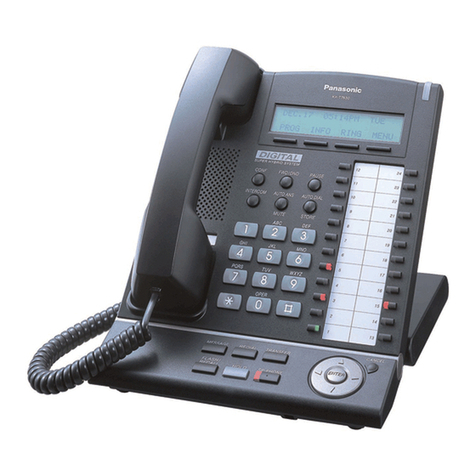
iDCS 500 Release 2 / OfficeServ INSTALLATION
TECHNICAL MANUAL PART 2 MARCH 2004
2.3
2. Place the upper cabinet on top of the main/lower cabinet ensuring that the upper
cabinet locating bumps are snug in the lower cabinet locating dimples. Install the
two provided screws in the dimples in the front lower panel of the upper cabinet and
the two provided screws in the dimples in the rear lower panel of the upper cabinet.
Replace the rear panel on the upper cabinet. A separate single point ground must
be connected to the main cabinet ground bar. Install the ground harness between
the two cabinets ground bars prior to installing any cards (refer to Part 2.6
Grounding). When a power supply is installed, verify that the power switch is in the
proper voltage setting, i.e., 110 (see Figure 2–6) position. See sections 2.8 Power
Connection, 2.9 MDF Cabling, Part 3, and Part 4 of this manual to determine the
basic required configuration and to make the system operational.
2.4 THREE CABINET INSTALLATION – FLOOR MOUNT
Check to see that each iDCS 500 cabinet carton includes the following items:
ziDCS 500 Cabinet
zTop cover
Left and right side covers
•Front cover
•Cabinet leg mounting kit
•AC power and DC power cables
Check to see that all additional 500 hardware and software is available for installation at
this time.
•Floor mounting equipment (legs or castors).
•Cards required to make the iDCS 500 system functional. i.e., power supply, central
processor, station and trunk cards
1. Mount the legs or castors to one of the iDCS 500 cabinets as the floor mounted
base cabinet. Prepare all of the iDCS 500 Cabinets by removing the side and front
covers of the three cabinets prior to installation to avoid damaging the covers and
to allow access to the interior. Remove the top cover from the bottom and center
cabinets and the base and rear panels from the upper two cabinets.
2. Place the center cabinet on top of the main/base cabinet ensuring that the center
cabinet locating bumps are snug in the lower cabinet locating dimples. Install the
two provided screws in the dimples in the front lower panel of the center cabinet
and the two provided screws in the dimples in the rear lower panel of the center
cabinet. Replace the rear panel on the center cabinet.
3. Place the top cabinet on top of the center cabinet ensuring that the top cabinet
locating bumps are snug in the center cabinet locating dimples. Install the two
provided screws in the dimples in the lower panel of the top cabinet and the two
